This teacup is made in the style of the Yuan dynasty blue and white porcelain, completely handmade and hand painted by Mr. Chunshen Zhan who is a master artisan, is a senior craftsman in Jiangxi Province. His blue and white imitations of Yuan Dynasty works are vividly depicted, exuding an antique charm, and are truly worth appreciating.
The painting on this teacup depicts a Kylin, which is a mythical creature representing auspiciousness. In ancient Chinese culture, the Kylin is a spiritually auspicious beast. Placing a Kylin at home is believed to bless one with good health, safety, and success while warding off negativity and bringing good luck. It serves as a guardian deity in the household and long-term wearing of Kylin motifs can bless lifelong safety for the wearer. Additionally, the Kylin is a symbol of harmony. Placing it in the living room of a home can promote a smooth career and improve one’s financial fortune. Once consecrated, the power of the Kylin can be maximized. Therefore, Kylin patterns are commonly applied in various aspects of daily life, such as clothing, architectural designs for houses, as well as tea ware and tableware used daily.
Besides, for Yuan blue and white porcelain refers to the blue and white porcelain produced during the Yuan dynasty (1271-1368) in China. The Yuan dynasty was an important period in the history of Chinese porcelain and one of the peaks of Chinese porcelain art. As one of the representatives of that era, Yuan blue and white porcelain exhibited unique artistic styles and technical levels. The characteristic of Yuan blue and white is the use of cobalt blue pigment for painting, which is made of cobalt oxide. After firing, the colour is bright and rich, with an extremely high decorative effect. Yuan blue and white porcelain has various shapes, thick and heavy, concise, and fluent lines, and stable and solemn shapes, all made exquisitely.
The evolution of Yuan blue and white is based on the foundation of the Tang and Song celadon. Firstly, the glaze colour was improved and innovated. Unique white glaze, eggshell glaze, and blue-white glaze were invented to make the glaze crystal clear. Cobalt pigment was imported for glaze colouring. Or using pigment made from domestic materials.
The formation of tin spots on Yuan blue and white is due to the high content of iron elements in local parts of the blue pigment. After reaching saturation in the high-temperature glaze solution and cooling down, the iron elements in the supersaturated part start to precipitate. If the iron content of the blue pigment is higher and the cooling rate is appropriate, tin spots are more likely to appear on the surface of the ware.
In addition to firing and materials, the formation of tin spots also involves the factor of glaze material. During the painting process, tin spots can also be formed due to the accumulation of blue pigment. Tin spots are more likely to appear on the surface of the ware at the intersections and the starting and ending points of brushstrokes. The formation of tin spots can be said to be a natural creation or an artificial decoration.
This teacup has a smooth and lustrous texture and uses the Su Ma Li Qing glaze material (a kind of blue pigment), with a heavy sense of tin spots, revealing a unique charm of the past era. The entire production process is completed by hand, and every detail has been carefully designed and polished, giving this teacup a unique artistic charm. The blue and white Kylin pattern is vivid, showcasing ancient cultural and aesthetic values, allowing people to immerse themselves in a beautiful artistic atmosphere while enjoying their tea.





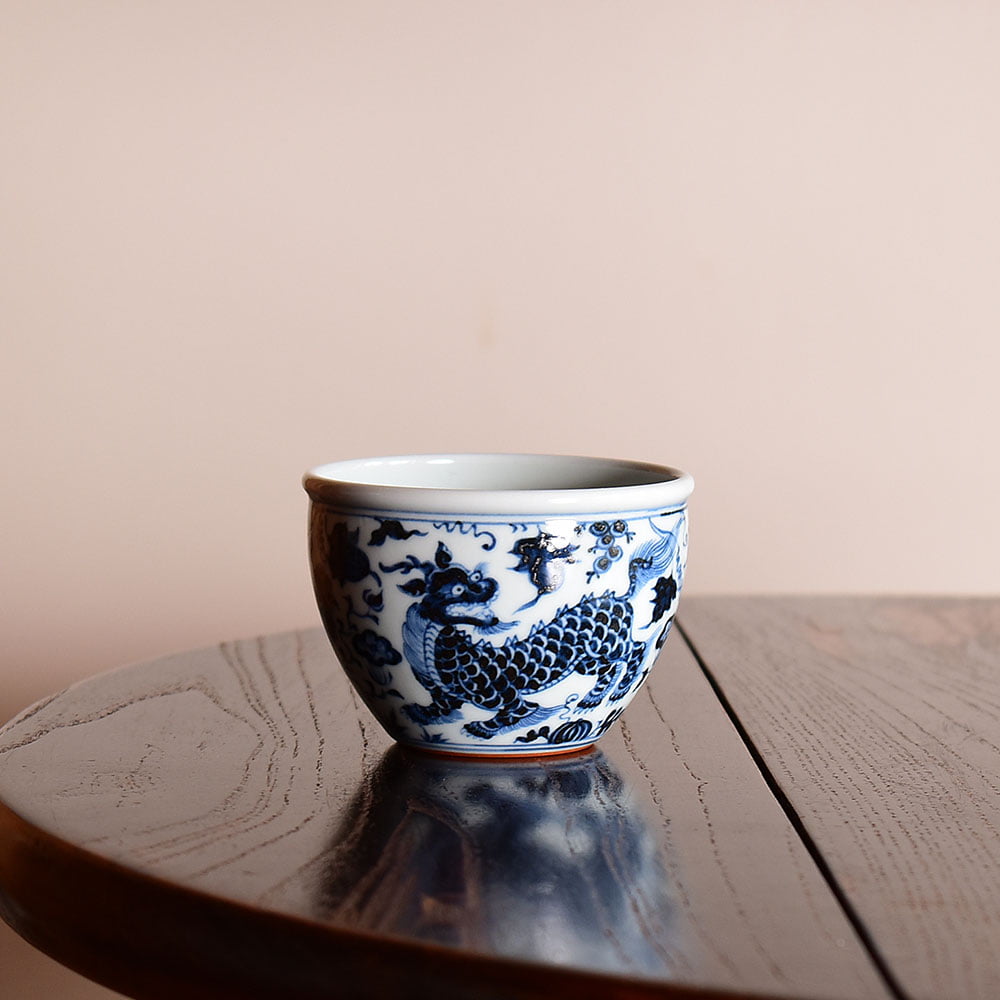
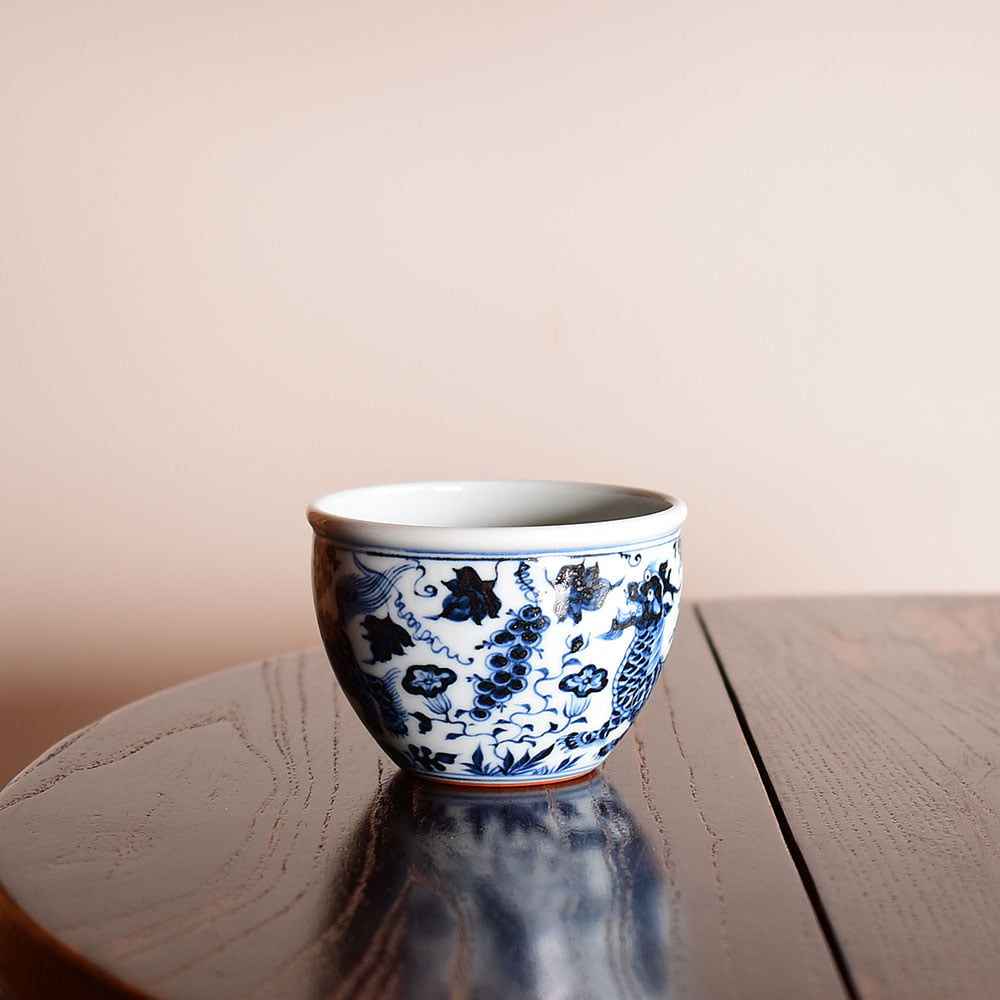

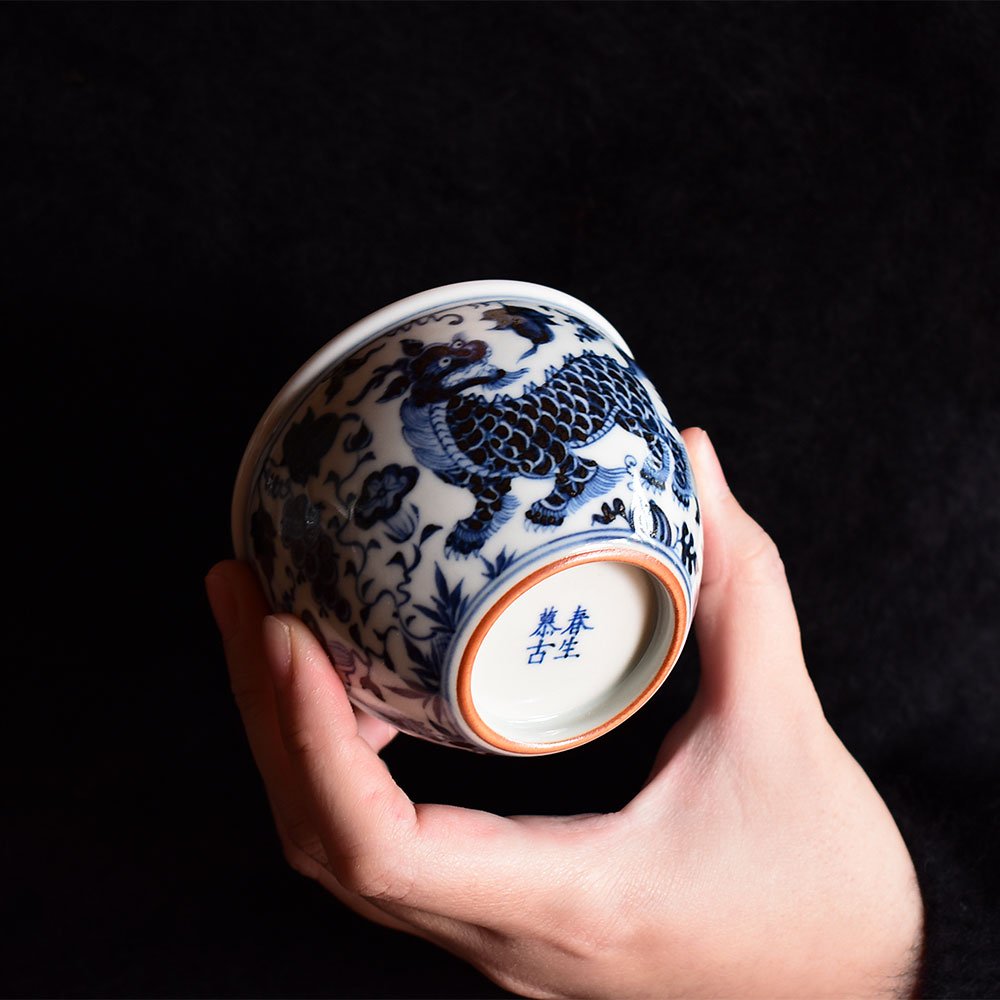
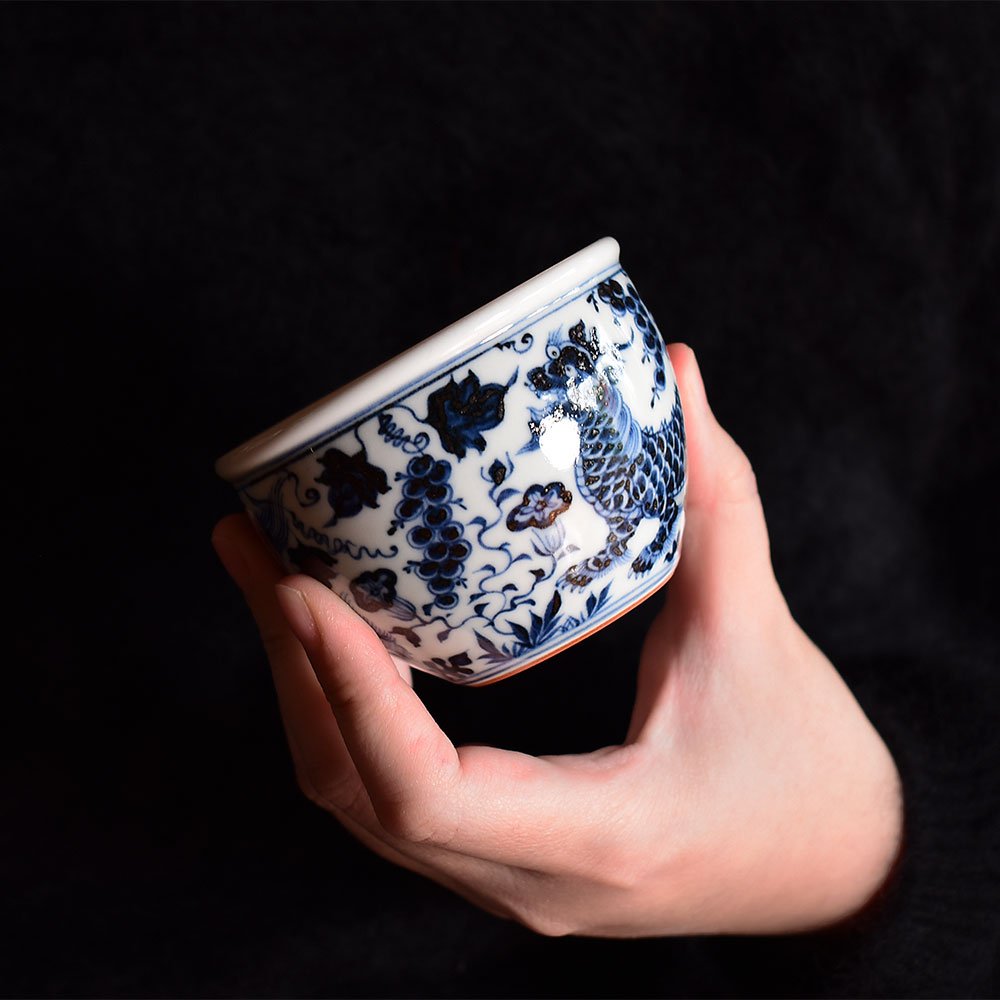
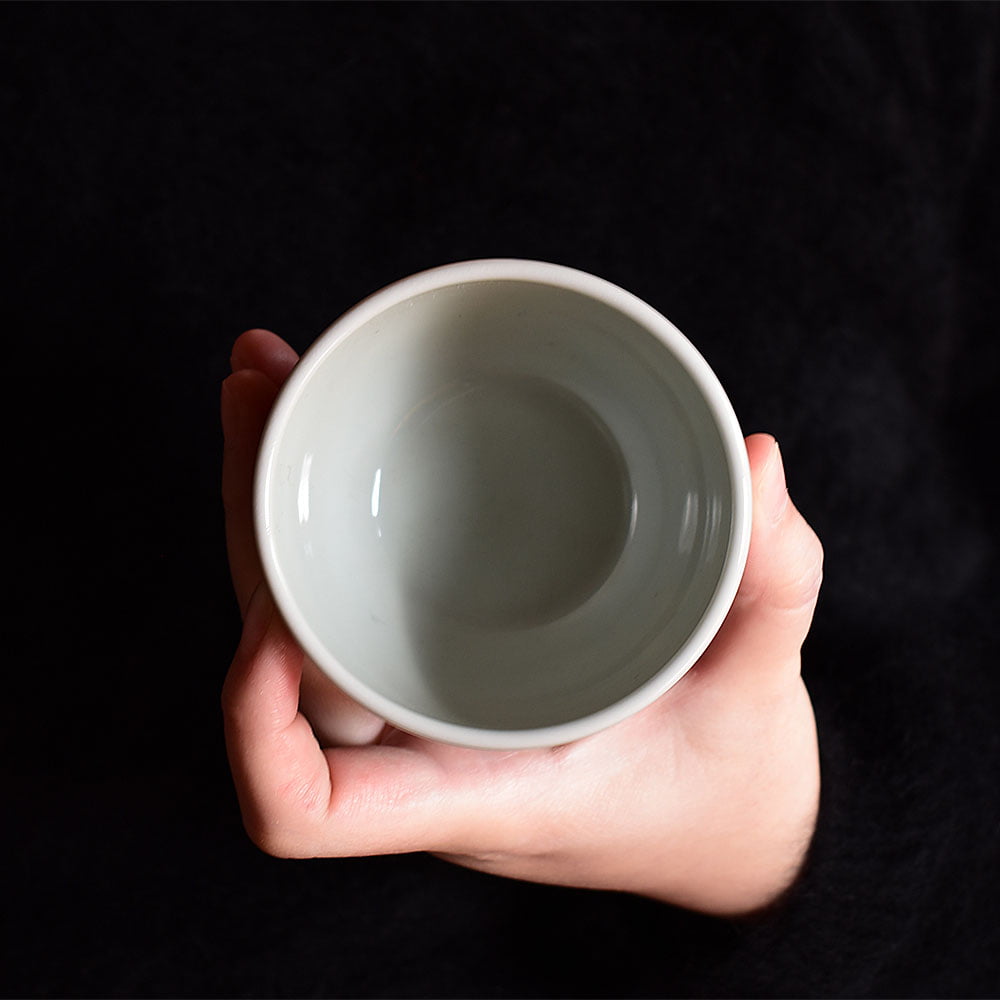
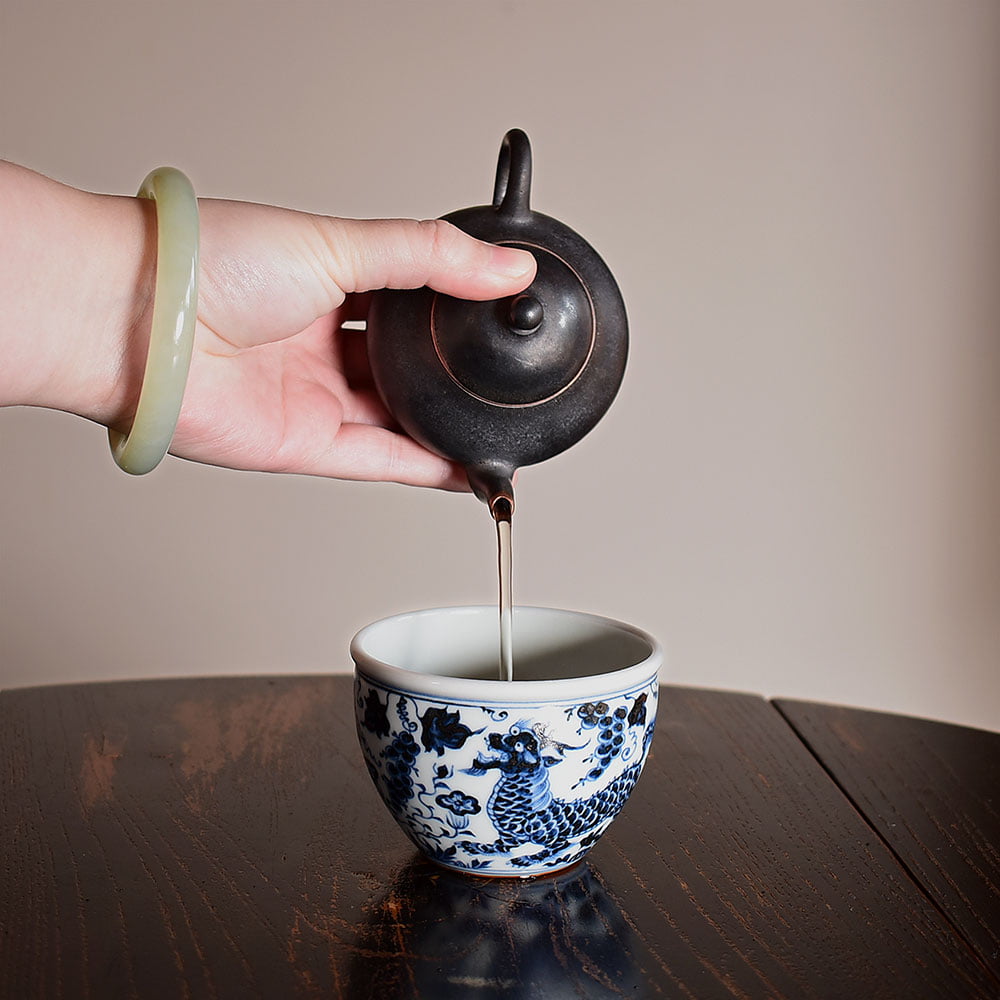
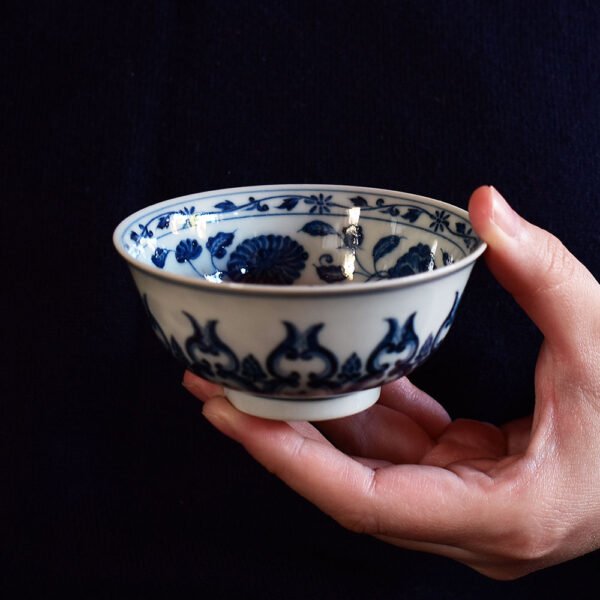
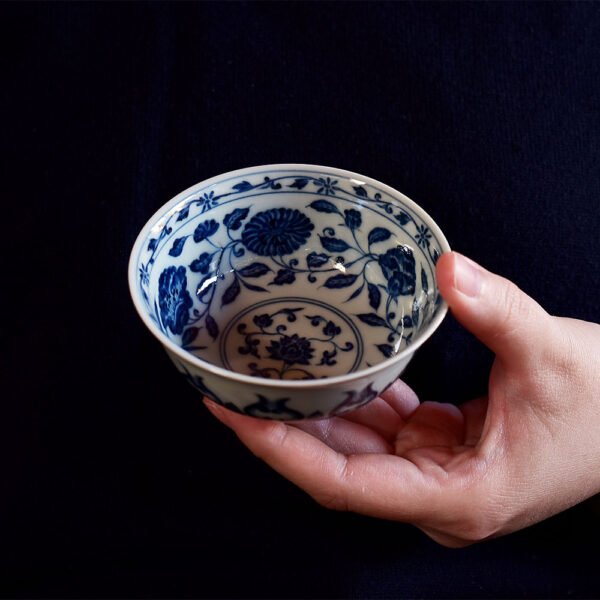
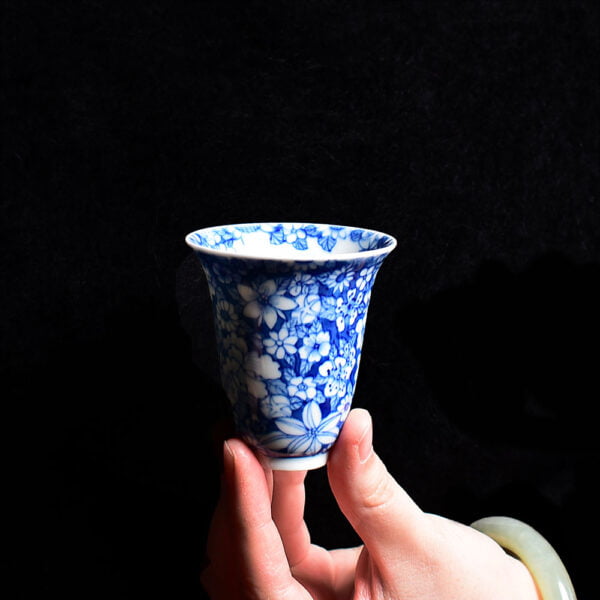
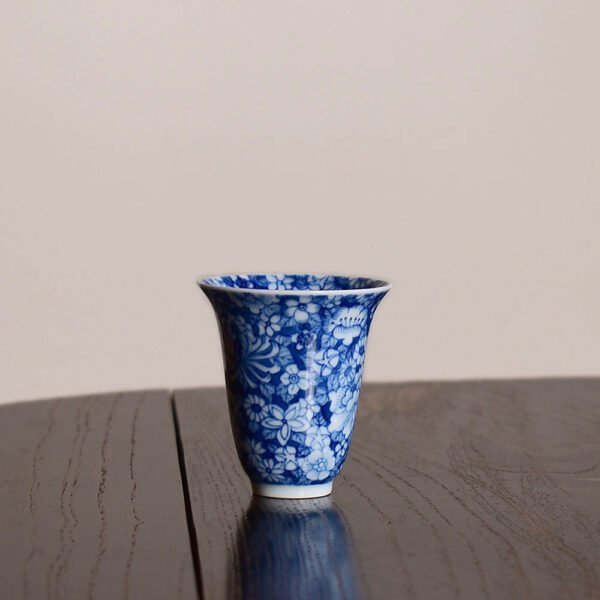
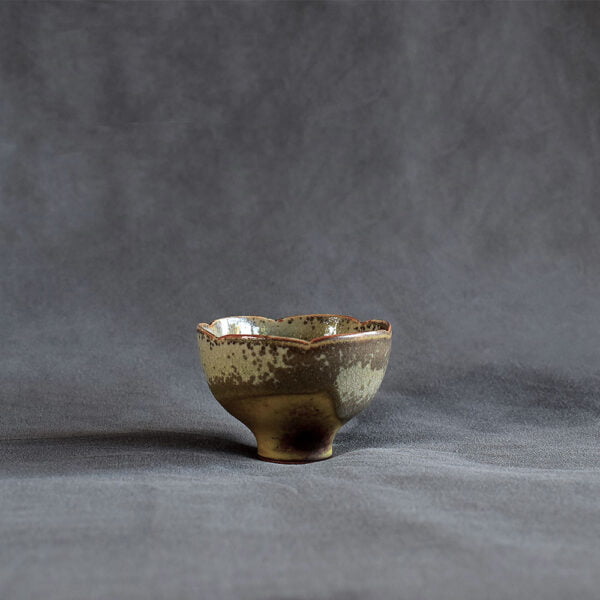
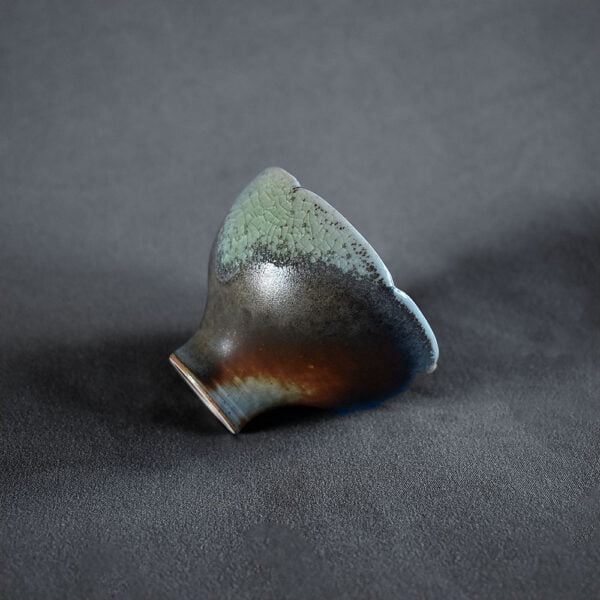
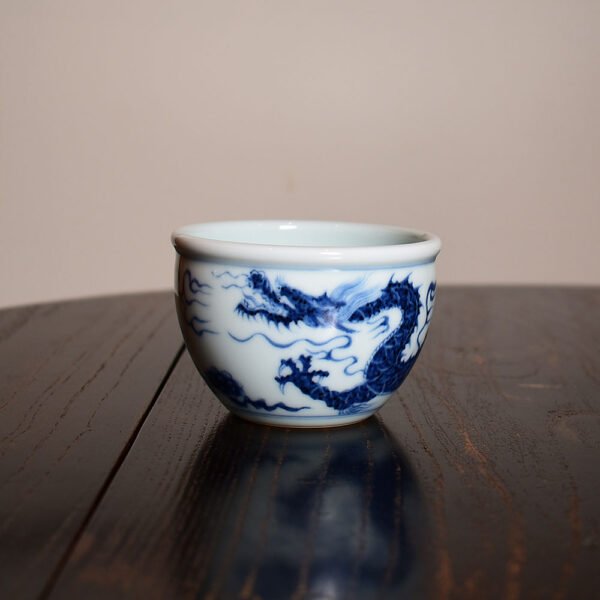
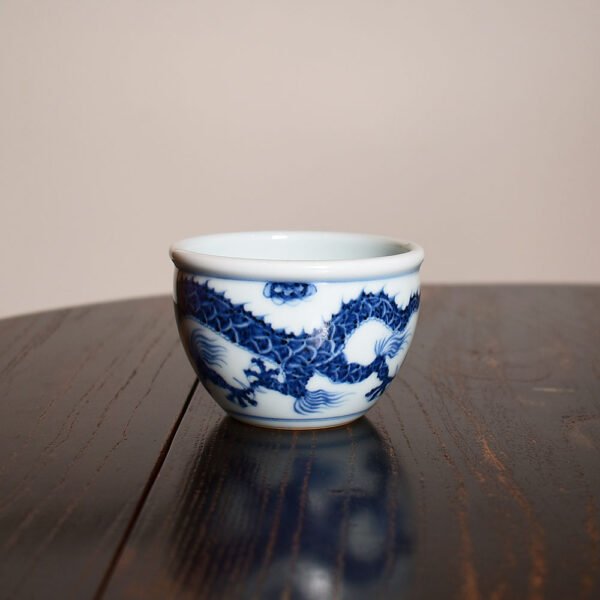
There are no reviews yet.